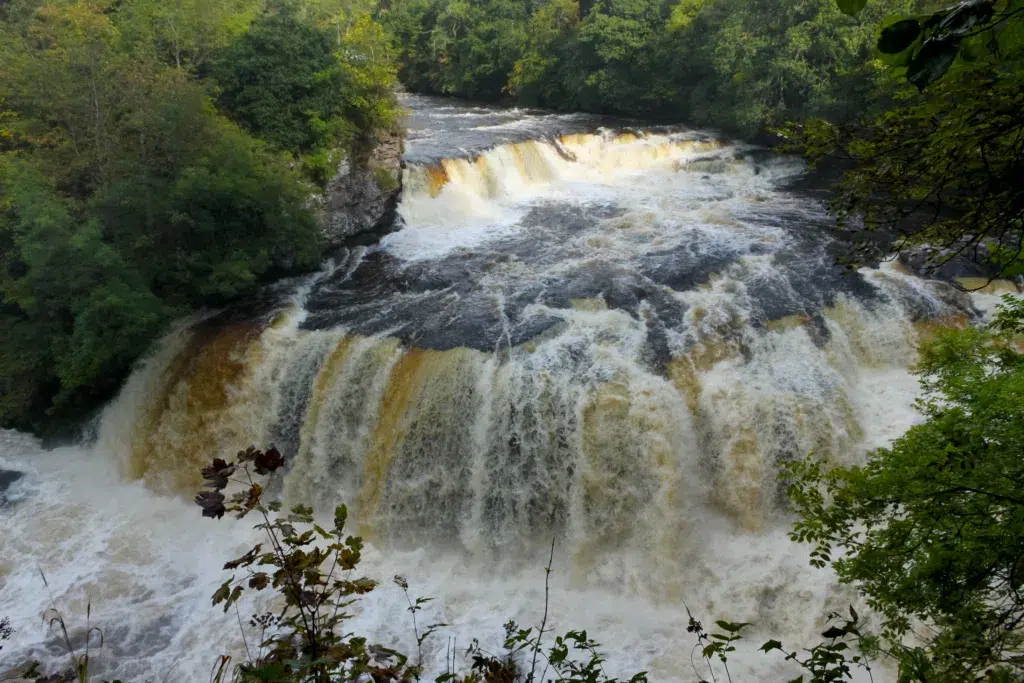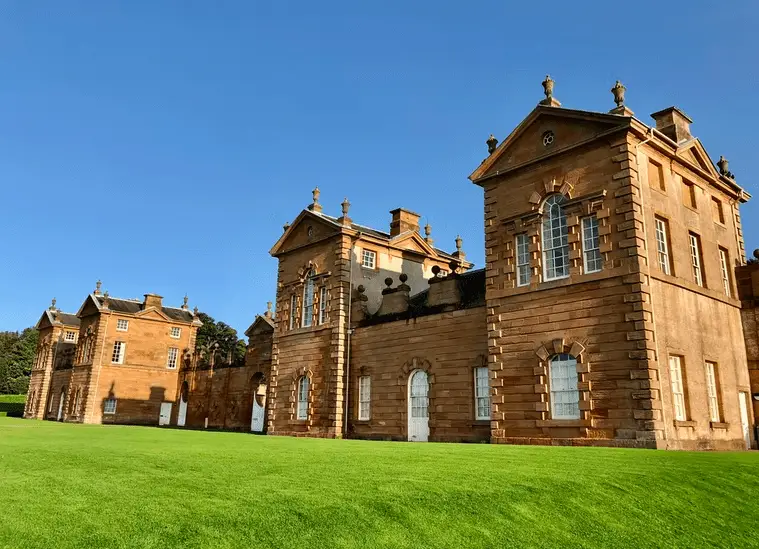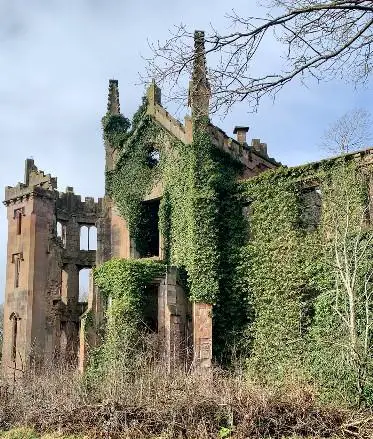Clyde Valley Tourist Route: The Ultimate Guide
The Clyde Valley Tourist Route is only 38 miles long making it a great day or something you can do easily over the weekend. It is a short and sweet route that takes you through stunning countryside with rolling hills and lush woodlands.
The Clyde Valley Tourist Route beings in Abington which is a small village in the south of Clyde Valley. Clyde Valley Tourist Route is perfect for a road trip or as a long distance walking route. It follows the M74. The route finishes off in Motherwell the last stop being Strathclyde Country Park.
In this part of Scotland, there is so much Scottish history including castles and features of the country’s industrial past. Also, you can enjoy Scotland’s best nature and wildlife.
Abington
Abington is knowns as the Roman Gateway of Scotland and it is the starting point for the Clyde Valley Tourist Route.
There are many Roman hill forts in the area to explore, just north of the village there are earthworks that date back to the 12th century. Interestingly, back in 1839, Napoleon III stayed in the town after a day of shooting.
Another feature of Abington is the Upper Clyde Parish Church. The church is a grey and brown stone which is edged in red whose foundation stone was laid in August 1898.
Also, the small town has plenty of cafes and restaurants. Abington Hotel serves a delicious menu for lunch and dinner.
Biggar
Biggar is a historic market town which has a medieval layout. Since the 16th century, Biggar Kirk has played a big part on the main street.
Also, Biggar has been associated with various historical figures including William Wallace and Bonnie Prince Charlie.
Biggar has many museums including Biggar and Upper Clydesdale Museum, Gasworks Museum and Albion Museum.
A small detour away from Biggar is the Little Sparta which is a garden created by Ian Hamilton Finlay who is an artist and poet.
The garden contains over 270 artworks and is found close to the Pentland Hills, a 20-minute drive from Biggar.
Every October, there is a cultural festival in Biggar called the Biggar Little Festival. At the event, you can enjoy a cultural feast of arts, drama, dance and literature.
Also, another yearly event held in Biggar is the Biggar Bonfire. Biggar Bonfire is an ancient custom that takes place on Hogmanay and dates back to pagan times.
The old market town is still reflected in Biggar’s Main Street as there are a variety of independent shops, a well-known independent grocer, award-winning ice cream and chocolate shop and a best-selling fish and chop shop.
Biggar and Upper Clydesdale Museum
The next stop is a museum in Biggar which opened in 2015. At the museum, you can learn about bygone times and catch a glimpse of rural and small-town life along the Clyde during the 19th century.
The Gladstone’s Court, a replica of a Victorian street is a well-loved attraction in the museum.
Gasworks Museum
The Gasworks Museum is a small museum which shows how coal gas was made commercially.
Also, there is a fascinating collection of artefacts and appliances from years gone by including original machinery and life-size reproductions.
The museum has days called ‘Steam day’ when the machinery is up and running. Much of the original equipment is still in place and you can talk to the operators which makes it a fantastic experience.
Tinto Hill
For the next stop make sure you have packed your hiking boots. Tinto Hill is located just a 15-minute drive west of Biggar.
The views from the top of the 707-metre-tall hill are very impressive. This is one of the best Corbett hills near Glasgow.
You will be rewarded with views across the Clyde Valley and rolling hills in all directions. This is a great walk if you are new to hill walking.
There is a clear path from start to finish. It will take you roughly two hours to get to the top, and then one hour to climb back down.
Lanark
Lanark is a historical market town which was established back in the 12th century. The town’s St Nicholas Parish Church was what is believed to be one of the oldest church bells in the world.
Also, in the town, you can visit the Lanark Museum which displays items to show the history of the town and about Lanimer Day in June.
Lanark Loch
Lanark Loch provides amazing views across the countryside. There is a variety of activities to keep everyone entertained.
There is a small kiosk which serves refreshments and snacks. Also, there is a fantastic restaurant called the Inn on the Loch which has an extensive menu.
New Lanark Visitor Centre
New Lanark is a must-see UNESCO Heritage site that is on the Clyde Valley Tourist Route. The cotton mill settlement was founded in the 18th century by Robert Owen and it was a social pioneer during the Victorian times.
Owen built housing for workers and provided healthcare and education facilities including the world’s first workplace nursery.

Falls of Clyde Wildlife Reserve
Falls of Clyde Wildlife Reserve is a magical place which is based on the banks of the River Clyde. The walking route is very enjoyable and it is walkable from the New Lanark car park.
You can walk close to the water edge on the purposely built boardwalks and view a couple of art murals on the route. One of the biggest and most dominant features of the walk is the Corra Linn Waterfall.
The waterfall is 24 metres high and is a very spectacular view. The view is stunning in all seasons as the leaves in the woodlands change colours.
Also, you can walk further past the Corra Linn Waterfalls on the Clyde walkway to Corehouse and Kirkfieldbank, then cross the River Clyde and walk back to New Lanark.
Further downstream is another waterfall called Bonnington Wier. This is one of the many viewpoints along the route.
The route is fantastic for photographs and nature enthusiasts.
From January to March, you will have the highest chance of spotting the otters who reside there. Also, you will have a chance to see badgers, pine martins and kingfishers in the area.
Annie McLeod Experience
At the Annie McLeod Experience, you can be taken back in time to discover what life was like in New Lanark.
On the ride, you sit in motorised pods which take you on a fascinating journey of the ghost of the mill worker, Annie McLeod.
Corra Castle
Corra Castle is a ruined 16th-century castle within the Corehouse Estate near New Lanark.
The castle overlooks Corra Linn, one of the four waterfalls which make up the Falls of Clyde.
In 1967, the castle became a scheduled monument. The site is hard to access due to the sharp cliffs on three sides. From, the castle, there are unobstructed views across the countryside.
West Forth Forest
West Forth Forest is a juvenile woodland near the village of Forth. It is a perfect place for walkers, cyclists and horse riders.
Here, you can enjoy the wonderful views onwards the Southern Uplands and the Border Hills. Also, in the spring and summer, you can admire the wildflowers at your feet.
Other woodland areas to explore include Wilsontown, a former ironworks and Fauldhouse, which is partially popular with cyclists.
Craignethan Castle
Craignethan is a castle ruin built in the 16th century by Sit James Finnart. The castle ruin has a well-preserved tower and a stone-vaulted shooting gallery known as a caponier and is one of the few left in the UK.
Finnart was a great talented architect and the castle was one of the finest in Scotland. You can also admire his work at Linlithgow Palace and Stirling Castle.
The castle is set in a lovely location, with the Nethan Gorge next to it. Also, there are plenty of spiral staircases, cellars and high views from all over the countryside.
You can get a tour inside the unique tunnel, which is different from any other castles in the UK.

Chatelherault Country Park
Chatelherault Country Park is a 500-acre estate just located outside of Hamilton. There are many nature trails in the park covering over 10 miles.
Also, do not miss the formal gardens next to the stunning hunting lodge which was built for the Duke of Hamilton in 1732.
On one of the nature trails, you can cross Duke’s Bridge and get a view of the crumbling ruins of Cadzow Castle. Also, you can get a stunning view across the Avon River and ancient woodland.
Also, there are plenty of historical and heritage tours. In addition, you can buy unique gifts at the gift shop or relax with a coffee at the Oak Cafe.

Cambusnethan Priory
Cambusnethan Priory is a large neo-gothic ruined mansion which was built in 1820. The priory has been left for ruin since the 1980s.
The building has seen a few vandals and fires over the decades and it is unsafe to enter. However, it is great to walk to, to look at it from a safe distance and you can imagine what life would have been like for the people who lived here.
Low Parks Museum
The Low Parkes Museum is located in the Duke of Hamilton’s former Estate. There are three historic buildings which have survived – Hamiltons Mausoleum, Hamilton Palace and Portland.
The Route 74 heritage walk begins at the museum and follows the River Clyde and River Avon to the Chatelherault Country Park.
The museum traces the history of South Lanarkshire. Early settlements, design, industry, technology and agriculture are all displayed in the museum.
Also, the Cameronians (Scottish Rifles) Gallery reflects over 300 years of this unique regiment’s story.
The Town House
The Town House is a multi-purpose arts venue which is used to host performances, conferences and weddings.
This category A listed building is of Edwardian Baroque Style and combines three linked structures, the Carnegie Library, the Town House and the Town Hall.
Strathclyde Country Park
Strathclyde Country Park is a leading place for outdoor recreation. The water sports centre has hosted many sporting events.
You can enjoy plenty of water sports including kayaking, rowing, windsurfing, water skiing and sailing.
Also, in the park, there are mature woodlands, rough wetlands, wildlife refuges and neat open parkland. Historical features include Bothwellhaugh Roman Fort and Bathhouse and Orbiston Tower House.
It is the perfect place to watch the world go by, sunbathe in the nice weather and go birdwatching.
What is the Clyde Valley Tourist Route?
The Clyde Valley tourist route showcases the best attractions in the Clyde Valley. There are various museums which show what life was like for the people who lived in this area in Victorian times.
Also, the museums show what industries used to thrive in this area. Being located on the River Clyde, the valley has so much interesting nature, wildlife, landscapes and luscious countryside.
What towns are in the Clyde Valley?
The Clyde Valley Tourist Route passes through the following towns and villages – Abington, Biggar, Lanark, Forth, Carluke, Larkhall, Hamilton and Motherwell.
What is Clyde Valley known as?
Clyde Valley is located on the west coast of Scotland and the valley sits on the River Clyde. It is home to Scotland’s largest city, Glasgow.
Final Note
The Clyde Valley tourist route is a short but scenic route which starts just at a rural town called Crawford. It is not the most popular route, however, it shows some of the most fascinating old historic settlements in Scotland.
The route is perfect for those who are history enthusiasts, nature enthusiasts or love exploring places that are far away from big crowds. Also, the route is very picturesque and has many photography opportunities.
The route ends in Motherwell at Strathclyde Country Park which is just near the motorway. From there, you can explore more of Lanarkshire, move to Glasgow or head further north to Stirling or Perth.
